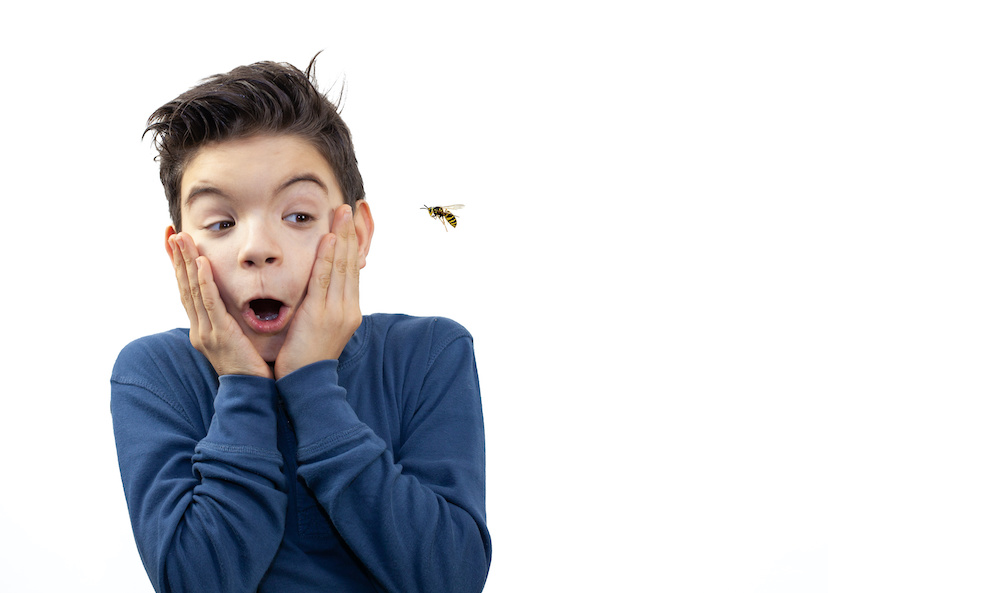How to Teach Your Kids About Bees and Bee Safety

The summertime is prime time for bee activity. Honeybees are hanging around flowers and plants to collect nectar and pollen to bring back to their family members in the hive. While bees are out and about, so are our kids. They are outside at play, running around the yard, climbing trees and enjoying sugary snacks on the porch.
While both bees and kids can live in harmony, many kids are fearful of bees and the potential for a nasty sting. They have been told that bees are mean little creatures that will sting you if you get too close. No wonder why kids run, swat or scream in fear at the sight of a bee!
One of the best ways to protect kids and honeybees is to educate children about bees early. Giving them information about bee behavior, the important role they play in our environment and how to safely interact with bees can help reduce the fear and keep everyone, including our honeybee friends, safe and happy.
Know Your Bees, Wasps and Other Stinging Insects
Honeybees are not the only stinging insects that your kids might encounter. Yellow jackets and hornets are two common types of wasps that are also buzzing around in the summer season. Teach your kids the differences among some of the most common bees and wasps, and give them the tools to identify each. For example, you might use the phrase “if it’s shiny and skinny, stay away” to help your kids recognize a wasp, and “if it’s fat and fuzzy, watch from afar” to identify a honeybee.
Of course, you can use whatever works for your kids. The point is that children should know that certain buzzing creatures will be more aggressive than others. Yellow jackets and hornets can be more aggressive, and continue to attack, even after an initial sting. Honeybees can only sting once.
A good rule of thumb for teaching your kids about bees and wasps: all are capable of stinging if they are threatened, but mostly they want to leave you alone.
This leads us into the second tip for teaching your kids about bees. Kids should be taught how to avoid bothering bees and what to do if they happen to encounter a bee or hive.
Safety Tips for Encountering Bees
- Don’t run around barefoot in the grass. Bees can be buzzing around between blades of grass. When they get startled by a human foot, they may sting in self-defense!
- Never swat at a bee because it is likely to make them upset. Instead, stay still and wait for the bee to move along.
- Bees like to live in hollowed out trees, on tree branches, under rarely used picnic tables or in the eaves of a structure like a garage or shed. These locations also make great places for kids to play. Teach your kids where bees are most likely to build their nests so they can avoid those areas, or at least proceed with caution.
- In general, do not put your hands in logs, holes or other structures when you see bees present. Bee activity could indicate a nearby hive.
Understand the Role That Bees Play in Making the Food We Eat
Finally, instead of making bees the enemy, show your kids how amazing these little creatures truly are by sharing some fascinating facts. Your kids might be interested to know that much of the food that they eat comes to them because of the hard work of bees. They might also be interested in learning about the intricate way in which they build their hives, including all of the teamwork it takes to coordinate the structure. They may even love to learn how they make honey, while tasting some of the delicious stuff at the same time!
Learn more fascinating facts about honeybees here.
Keep Your Kids Safe from Swarms and Hives
If you suspect that you have a swarm or hive on your property, it is still important that you keep kids at a safe distance. The best course of action is to call a local, reputable live bee removal company to come to your home and safely remove the bees, honeycomb and all remnants of the hive.
When you need professional live bee removal services in the San Diego area, call D-Tek Live Bee Removal right away for the best in safe, humane bee removal services.
